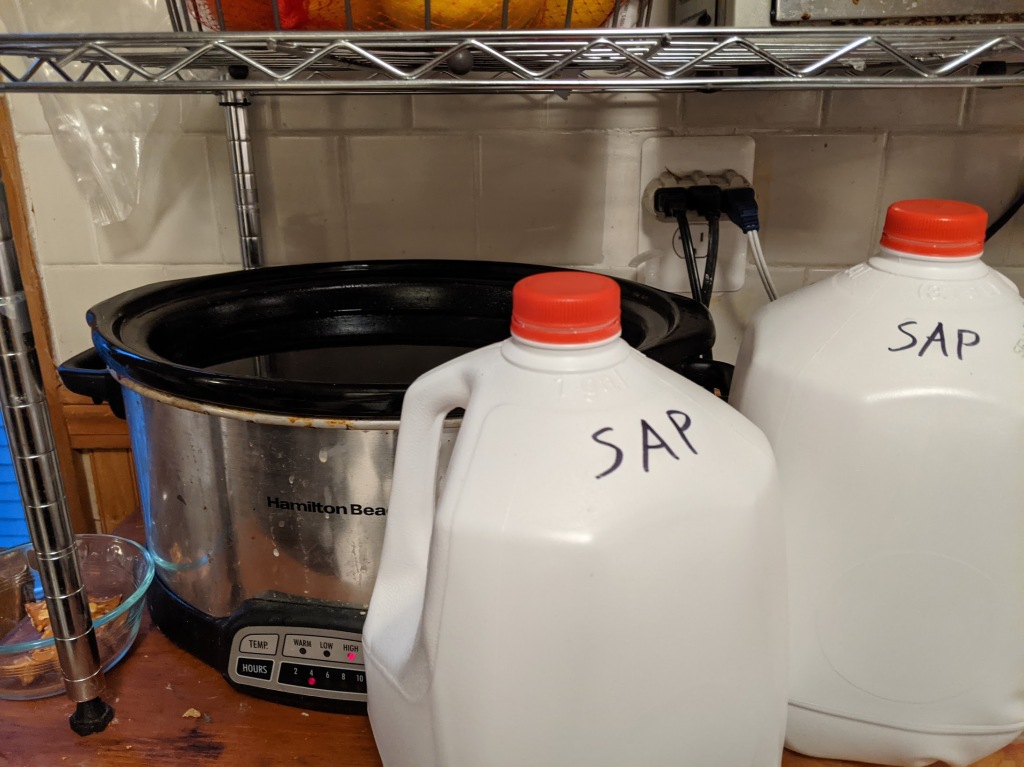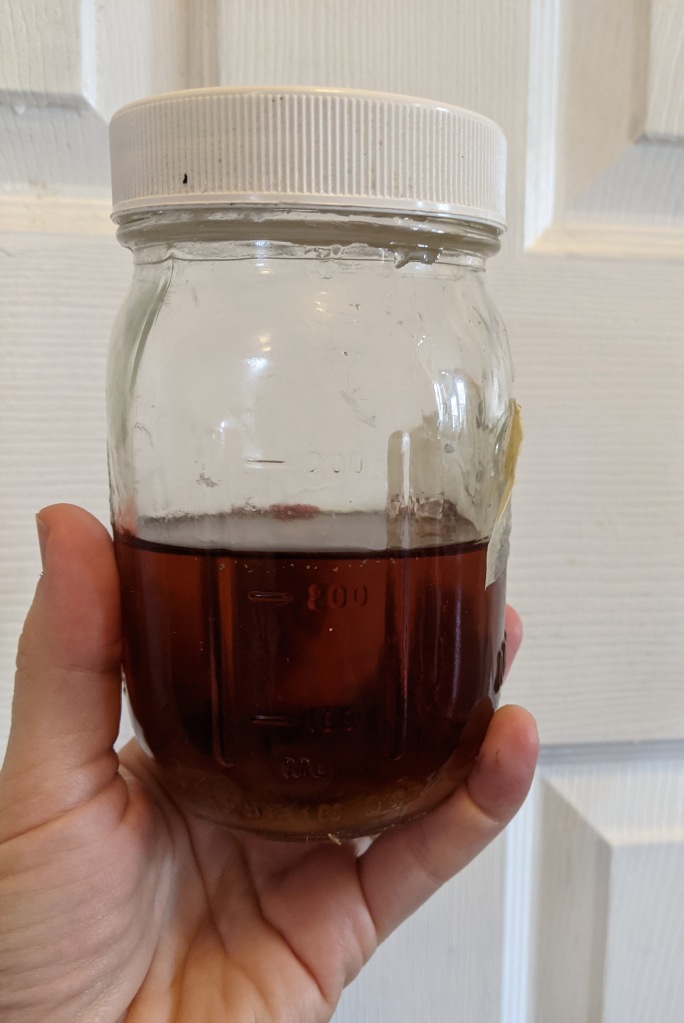I tried to find out if anyone had successfully done this, and couldn’t find verification on the internet. So this is just to confirm: yes, you can boil maple sap into syrup in a slow cooker / crock pot. This is my third year doing it.
I’m not sure if the cost of the electricity makes this actually cheaper than buying maple syrup from the store, but for me it’s a fun project. Outdoor fires are not practical or legal in the city where I live, and indoor boiling creates more steam than I’m up for. So for me, the slow cooker has worked well.
One of many guides about how to tap trees and collect sap.
I verified that two of my trees were maples. (One produced barely any sap – I think it’s a Norway maple which apparently doesn’t drip well. Now I just tap the other.) I got some taps from Amazon or somewhere. You need a drill with the right size bit to tap your tree.
Once the weather is right (below freezing at night and above freezing in the day), it’s time to collect sap. Typically this is in January – March depending on where you live and the particular year. I used this app the first year, and I don’t anymore but I just want to share my joy that it is called the Sap Tap App.
I use well-washed gallon milk jugs to collect and store the sap. I keep them in my fridge, or outside if it’s not too warm – you don’t want the collected sap sitting around at warm temperatures for days or it gets nasty.

The process of turning watery sap sap into thick syrup is basically reducing it about to 1/40th its volume by evaporating the water out of it. Traditionally you boil large pans or pots of sap at a high temperature, which puts a lot of steam into your house if you do it inside and requires some amount of watching to be sure it’s not boiled down too much about about to burn. The slow cooker method is, well, slower.
I fill my slow cooker with as much sap as it will hold, and keep it on high constantly for several days. Leave the lid off – remember the point is for the water to leave the pot. It won’t boil, but will stay hot and gradually reduce. Add more sap about once a day. You don’t want it to burn overnight, so be sure it’s at least half full if you’re leaving it on overnight. After a few days, many gallons of sap will be about half a gallon of amber-colored fluid. I store that in the fridge in a glass jar and repeat with fresh sap. Once the sap has stopped running or I’m tired of having the slow cooker occupying the counter, it’s time to finish the syrup as per these directions. You can do this in the slow cooker or in a pot on the stove. Cook it until it’s thick like syrup. It will try to boil over if you’re doing this on the stove.

The finished syrup keeps indefinitely in the fridge. Here’s a jar from last year that we’re still finishing up:

